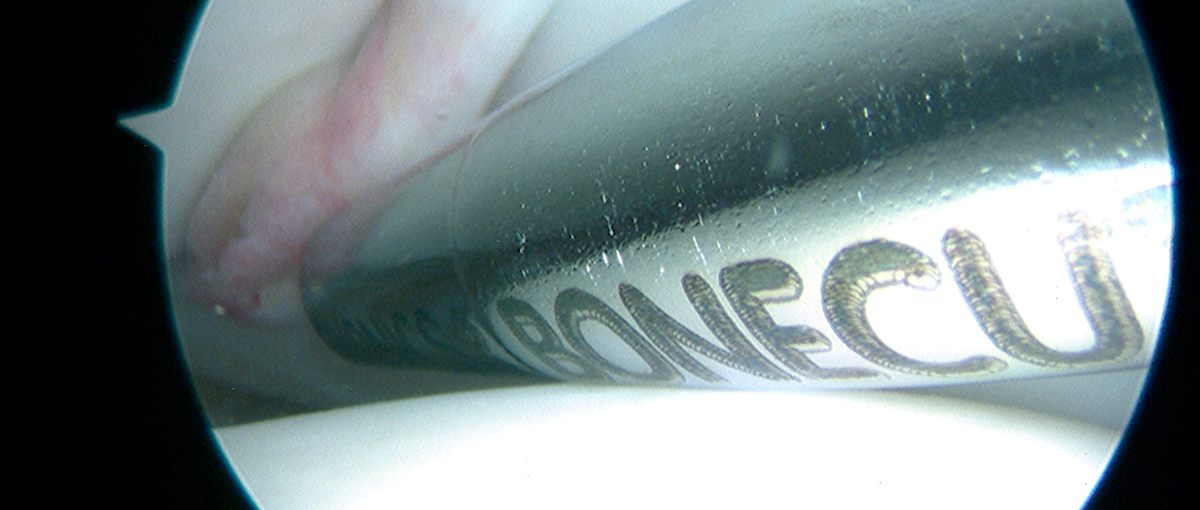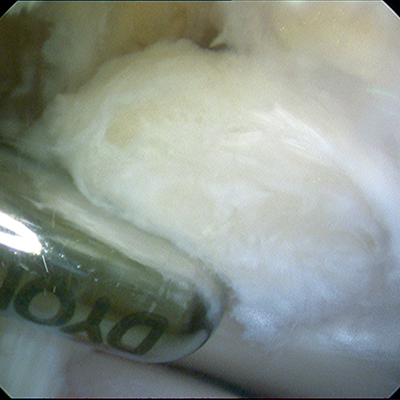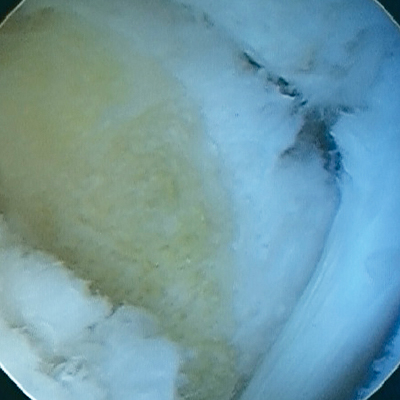The Technique
The use of modern technology allows operations to be performed through keyhole incisions and has advantages over conventional surgery, as the ankle responds badly to open incisions, and complications of open surgery are common.
Ankle arthroscopy is performed under a general anaesthetic either as a day-case or with an overnight stay. We will advise you as to which is more appropriate to you.

During the surgery an arthroscope (A small telescope approximately three to four millimetres in diameter) is inserted into the ankle through two or three small puncture wounds. This allows the surgeon to see and operate inside the joint. Operations can be on the soft tissues and the bone, including removal of bony spurs, damaged cartilage and inflamed soft tissue.
After the operation
Hospital: After your operation you will have a padded bandage on your ankle. You will not harm your ankle by gently moving it within the confines of the bandage. It is important to start moving your ankle as soon as possible as the muscles can become weak and your ankle stiff. Before going home you will be seen by a physiotherapist who will explain the exercises and check that you are walking safely. The exercises are designed to help you regain full range of movement and muscle strength in your ankle. The exercises should be performed two to three times daily. You are allowed to take you full weight through your leg and you should try to walk as normally as possible, however, you may require crutches for a short time.
At Home: The padded bandage can be removed 24 hours after surgery. The puncture wounds will have a stitch or steristrip tape keeping the wound edges together. Cover the puncture wounds with an elastoplast dressing and keep the ankle dry for two weeks (after 48 hours you may take a shower provided the wound is kept dry with a waterproof dressing) to allow the puncture wounds to heal and the steristrip tapes can then be removed by yourself in seven days (they may already have come off).
SEVERE PAIN, MASSIVE SWELLING, INFLAMMATION OR DISCHARGE SHOULD BE REPORTED TO YOUR GP. If you cannot contact your GP you should contact the hospital.
You will be given a tubigrip support to wear after you have removed the bandage. Wear the tubigrip support during the day, but take it off at night. Your ankle may ache and swell after arthroscopy and you will probably need to take some painkillers such as co-proxamol, voltarol, nurofen or ibuprofen for the first few days. Wearing the tubigrip bandage and applying ice packs will help to reduce the swelling. Ice packs can be applied twice a day for ten minutes. (Protect the skin with a damp towel and use a bag of frozen peas). When you are resting you should keep your leg elevated, on a stool or chair, to help keep the swelling down. It will take at least three weeks to recover to your pre-operative state if a soft tissue procedure has been performed and twice this time if a bone has been removed. The scene is then set for recovery, which will take about as long again.
Work: Return to work when your ankle feels comfortable and you are confident your ankle will be able to stand the stresses of your job. If you have an office-type job you should be able to return to work within seven days; if your job is strenuous and involves a lot of walking then you will probably need two to three weeks off work. It is usual to self-certify for seven days. If you need a certificate for longer your GP will issue you with one.
Driving: Driving is usually possible after seven days when your ankle is feeling comfortable. Make sure you can operate the pedals without pain. Check that you could perform an emergency stop safely. You should notify your insurance company.
Sport: Strenuous physical activity and sport can be resumed when your ankle is feeling strong, comfortable and no longer swollen, usually four – six weeks, but this depends on the type of surgery carried out. Gradually increase your level of activity and before returning to competitive sport such as football, squash or rugby. Make sure you can hop and sprint with changes of direction and make sudden stops and starts – all without pain.
Possible complications: The success rate of surgery depends on the disease that is requiring the operation. It varies from 60 to 95%. There is a small (about one in 600) risk of serious infection, this can involve and damage that ankle joint. A small number of people will get some numbness or tingling on the top of the foot as a consequence of damage to small nerves in the skin. Usually this is temporary, but sometimes it can give rise to a permanent numb or sensitised area. Occasionally surgery is required to remove a damaged nerve (neuroma)
These notes are intended as a guide and some of the details may vary according to your individual surgery or because of special instructions from your surgeon.



